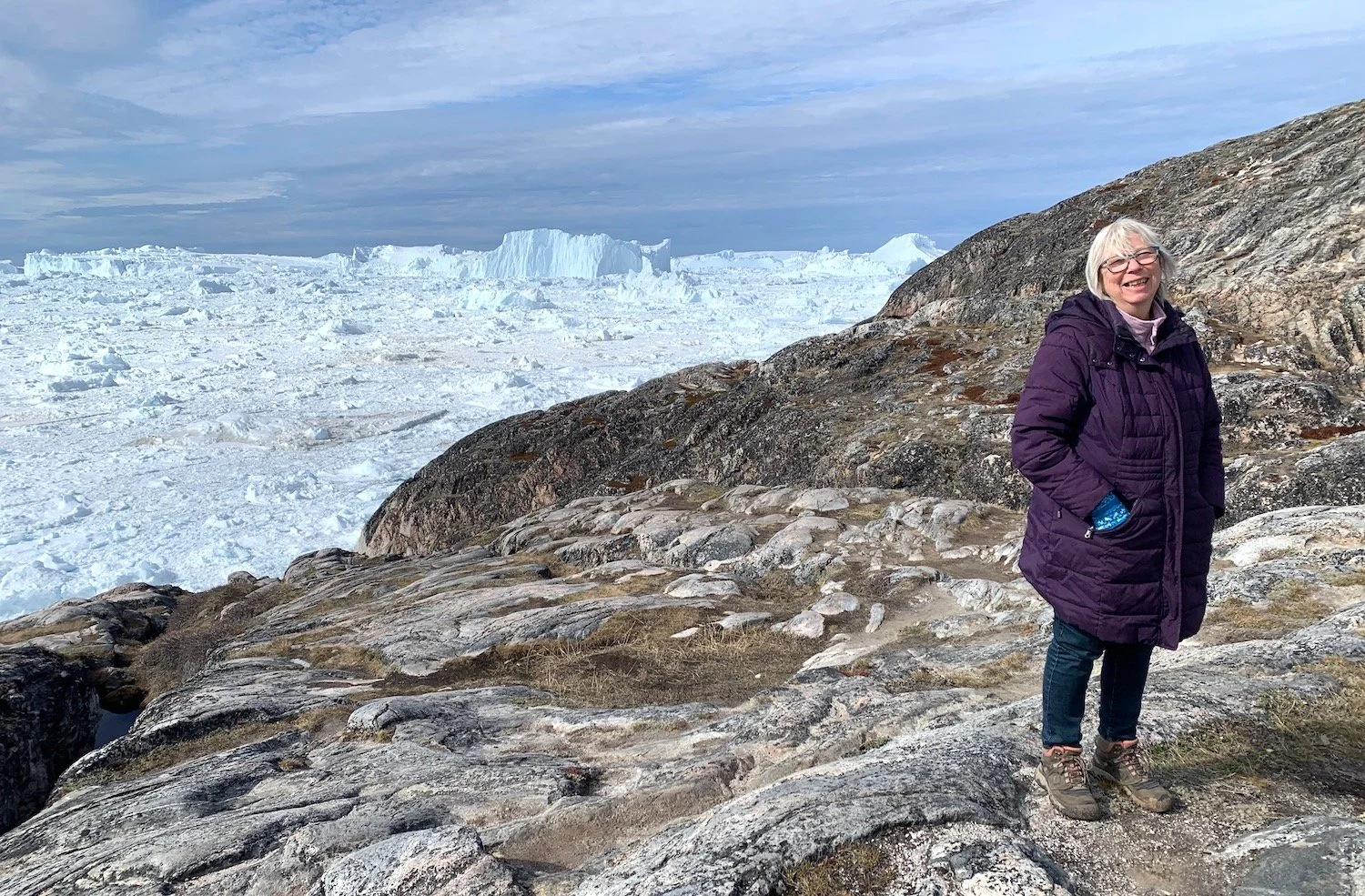The front line
On the front line of a receding glacier - Sermeq Kujalleq, the icefjord glacier at Ilulissat, Greenland.
I have a craving for ice. Perhaps it comes from that 20,000 year old connection to the ice age that has long gone, leaving an ancient DNA memory of cold, silent beauty. This week I got to experience some of this at Sermeq Kujalleq, the Icefjord glacier at Ilulissat in Greenland.
Ilulissat is one of the few places where the Greenland ice sheet calves into the sea. This fast moving glacier calves more than 46 cubic metres of ice into the sea each year. This produces the iconic icebergs that give the town Ilulissat its name, (icebergs). The glacier is so deep that when it reaches the sea, it scrapes along the seabed floor, breaking off into chunks that then float out into the sea.
When I first arrived in Ilulissat, there was a solid wall of ice on the left of the town, seemingly floating in the blue sea. Two days later after heavy winds, the bay was filled with floating chunks of ice, glittering in the sun. An amazing sight.
I longed to experience this glacier up close and personal and took a boat trip out to see it. But I never got that sense of being in amongst it till I walked into the UNESCO heritage site and sat down on the rocks, a few metres from its icy face.
Quiet, silence, only birds and the occasional dull rumble of the ice calving somewhere on the 7 km long glacier. I finished my day’s outing with a visit to the Kangiata icefjord centre, a building whose shape was inspired by “the flight of a snowy owl over the landscape.”
Here you can access the work of scientist and glaciologists as they research to understand what is happening with climate change through ice core samples that have been taken at the East Greenland Ice drilling Project (EGRIP) deep in the north east of Greenland. What these core samples show is a logbook over time, because ice bubbles contain the atmosphere of the earth when the snow fell.
Researchers are using this data to understand the past so that we can be better prepared for the future. The ice is leaving and faster than ever before.
As I write this I’m listening to the Air Greenland plane arriving at Ilulissat, filling the valley with the roar of its propellers. It’s only another two years until the huge international airport will be finished, complete with longer runway and state of the art ILS Instrument Landing System designed to make it safe for jets to land even in severe weather conditions.
More than 300 passengers per flight will arrive in this tiny town perched on a rocky cliff overlooking the largest moving glacier in the world. Will this little town cope with such a huge influx of people? Can understanding the ice help bring climate change to the forefront of all political and economic decisions the world over. Sadly I don’t think the collective will is sufficient to change the world quickly enough to stabilize the earth’s rising temperature. Our challenge that we can learn from the ice, is to be prepared and adapt.





